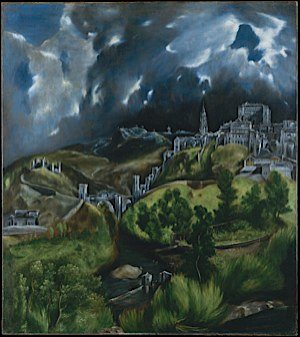The Great Gatsby Contents
Surrealism and circularity
Surreal imagery
There are several instances where Fitzgerald employs surrealism, perhaps to suggest the confusing and complex nature of Nick’s experience. The first example of this is in Chapter 1, with the image of the room where Daisy and Jordan appear to float in mid-air. This is later mirrored in Chapter 7 as ‘Daisy and Jordan lay upon an enormous couch, like silver idols weighing down their own white dresses…’
In Chapter 7, Nick uses surrealism again, initially reporting the Butler’s words as ‘The Master’s body…. it’s far too hot to touch this noon!’ Here, the heat of summer seems to distort reality towards extremes, even verging on hysteria. This scene leads to the increasingly desperate attempts to escape the pressure of physical and emotional heat whereby Daisy, Tom, Gatsby, Nick and Jordan drive to New York and a tense confrontation ensues in the Plaza Hotel.
In the final chapter, Nick identifies the ‘quality of distortion’ as something specific to the East itself, citing a ‘night scene by El Greco’ which is described with dreamlike intensity. If this image is indeed based on View of Toledo:

or View and Plan of Toledo:
_-_WGA10608-300px.jpg)
as some critics have suggested, then the additional detail of the foreground with four men carrying a drunken woman on a stretcher, whom no-one knows or cares about, is an entirely modern addition, emphasising the modernist ideas of uncertainty, ambiguity and relative experience.
Circles / cycles
Nick’s narrative seems to emphasise the circularity of Gatsby’s life, with repetitions and returns. Gatsby is said to travel ‘three times around the Continent’ with Dan Cody, during which time he develops his personality:
Gatsby states that he is very determined to ‘repeat the past’ and, even while he is thwarted in this, his dead body is presented in terms of circles:
Nick’s own experience is also circular, travelling East at the start of the novel, and returning West at the end. There are also some very subtle references to circles:
- Nick draws a ‘small circle’ around a time in the train timetable indicating his anxiety to return to Gatsby on the day of his death
- The word circle is also used in reference to the ‘circle’ of Nick’s or Tom’s arm, and the idea of couples dancing in ‘eternal graceless circles’.
Such verbal repetition, a common feature of this text, itself creates a sense of circularity, accumulating meanings with each reference.
